When wildflower season rolls around, South Africa transforms into a kaleidoscope of colour. But when exactly should you hit the road, where should you go, and what should you expect? Here’s everything you need to know to plan your ultimate flower-chasing adventure.
When is the Best Time to See Wild Flowers?
Generally, lower-lying regions warm up first after winter, so they start blooming earlier than coastal and higher-altitude areas. The result? A constantly changing flower display that evolves throughout the season. Early blooms are mostly annuals, while later months bring bulbs and perennials into full swing.
Where to go and when to visit
Here’s how the bloom typically spreads:
– First to flower: The lowland areas near Vanrhynsdorp, Vredendal and Klawer
– Next in line: Areas like Garies, Bitterfontein, Nuwerus and the Olifants River Valley in the Cederberg
– Mid to late season: The West Coast, Gifberg, Knersvlakte and Springbok (depending on rainfall)
– Around late August: The Bokkeveld plateau reaches its peak bloom
Travel hack: Visiting in September? Head for higher altitudes in Namaqualand or drive south towards Darling and the West Coast for the best flower sightings.
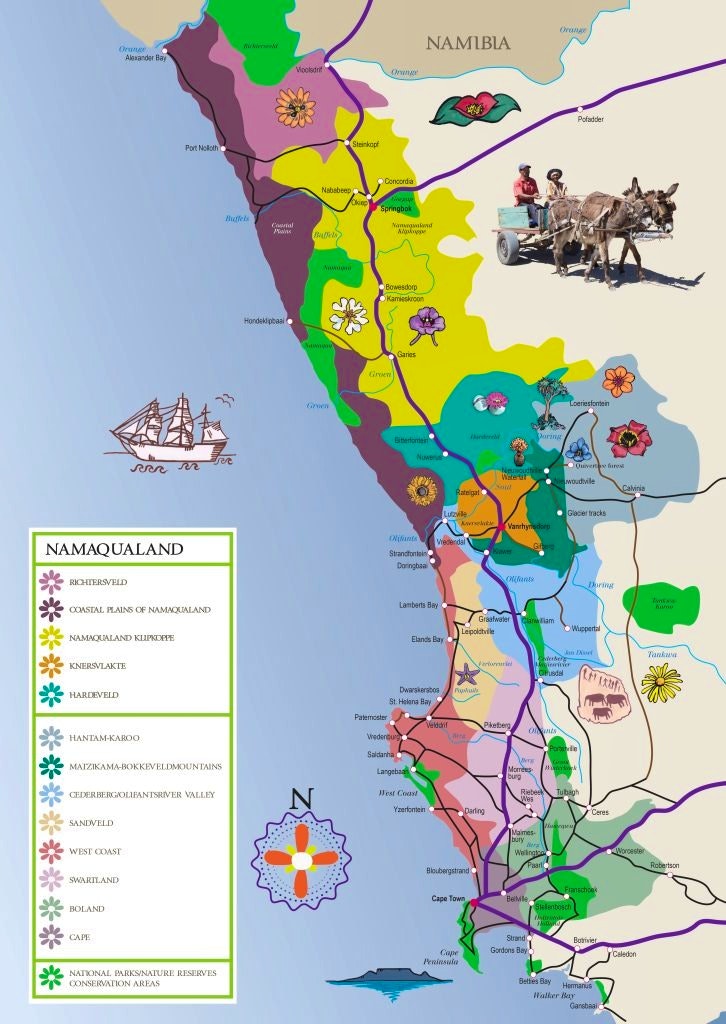
What Time of Day is Best for wildflower viewing?
Wild flowers don’t bother blooming until the sun is out and the temperature hits around 16 °C. So it’s safe to say: sleep in! The golden window is between 11:00 and 16:00, so pack a picnic and enjoy a lazy day in the veld.
What’s the Best Weather for Wild Flowers?
Wild flowers love a bit of sunshine. Too much cloud cover? They might stay shut. Too hot? They’ll wilt before you even unpack the cooler box. That’s why it’s best to book three or more nights in one spot, and then do day trips in the best direction based on the weather.
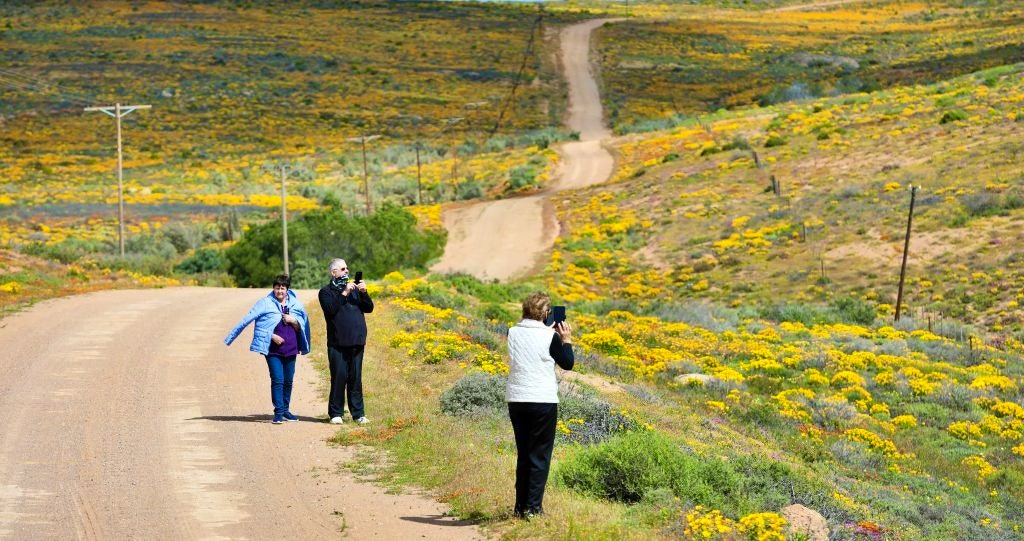
Top Wildflower Destinations in South Africa
Namaqualand
Northern Cape
This world-renowned region stretches from the Orange River in the north to Garies in the south, and from the Atlantic Ocean inland toward Pofadder. Towns like Springbok, Kamieskroon, Port Nolloth, and Hondeklipbaai are all blooming favourites.
With more than 3,500 species of wild flowers — and over 60% of them found nowhere else on earth — Namaqualand is one of the richest wildflower regions on the planet.
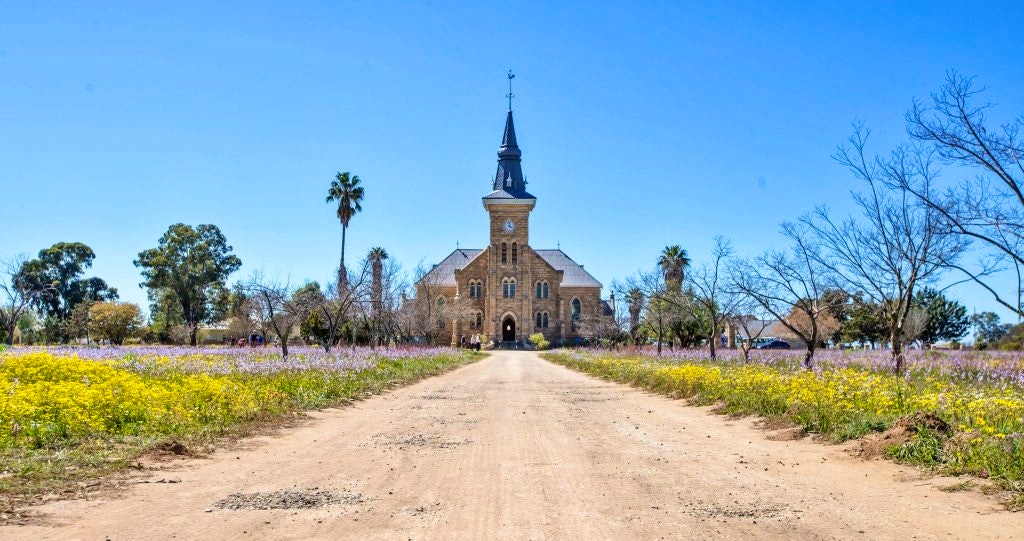
Must-visit reserves:
– Richtersveld National Park (4×4 only)
– Goegap Nature Reserve and Hester Malan Wildflower Garden near Springbok
– Namaqua National Park near Kamieskroon
– Skilpad Wildflower Reserve
– Nieuwoudtville Wildflower Reserve and Hantam National Botanical Garden
– Quiver Tree Forest on the R357 (about 40 km from Loeriesfontein)
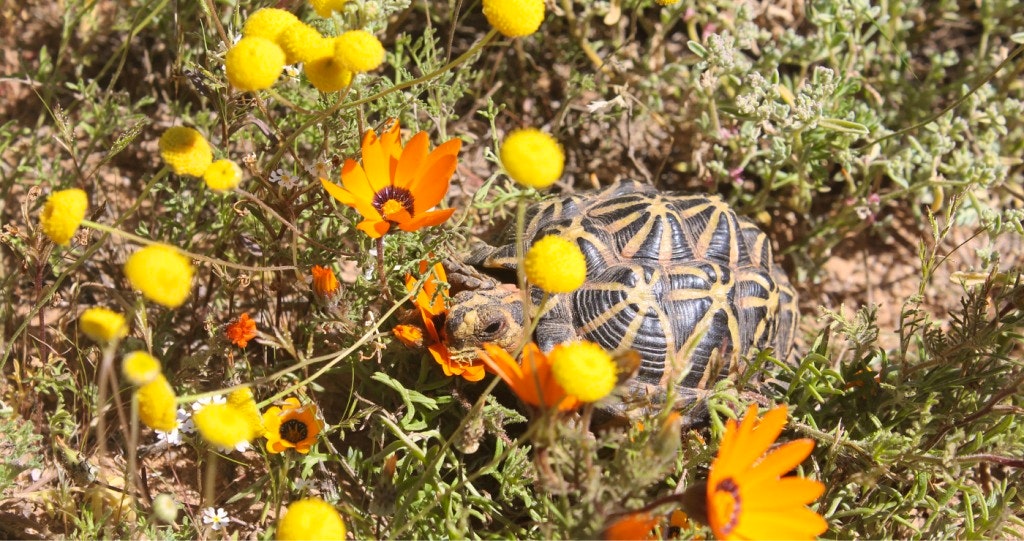
Scenic routes worth exploring:
– Caracal Eco-Route (200 km, 4×4 recommended)
– Skilpad 5 km flower trail
– Goegap family loop
– Oorlogskloof multi-day hiking routes

West Coast
Western Cape
A flower-lover’s dream with an ocean view! Stretching from Darling and Yzerfontein all the way to Lamberts Bay, this region is perfect for combining blooms with beaches, seafood, art, and wine tasting.
Flowering Season:
From mid-August to late September, with some blooms even lasting into October.
Where to go:
– West Coast National Park (especially the Postberg section — open only in flower season; book in advance!)
– Cape Columbine Nature Reserve near Paternoster
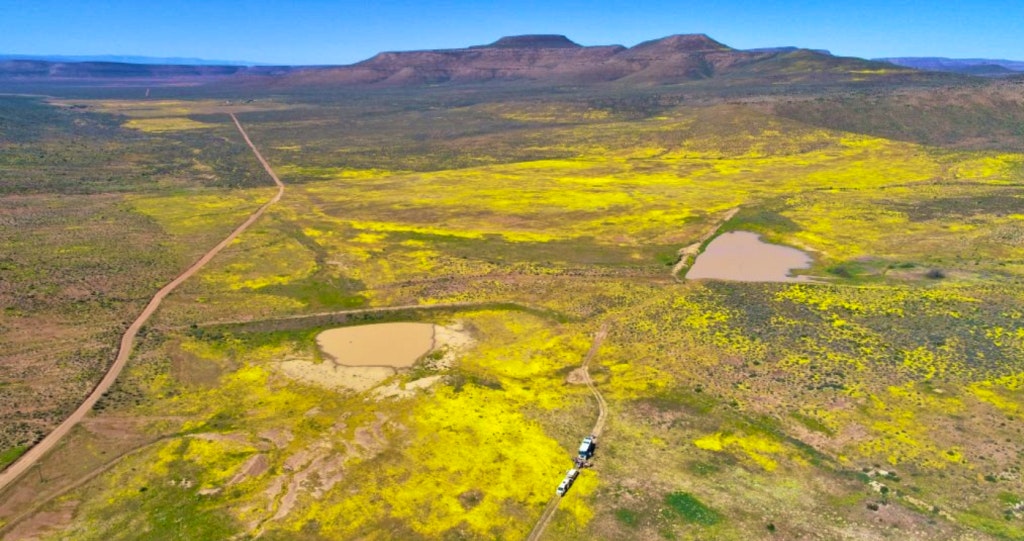
While you’re there:
Visit the Cape Columbine Lighthouse, browse Darling’s local markets, or enjoy a show at Evita se Perron — a must for quirky local flair.

Tankwa Karoo
Western Cape
Think flowers can’t bloom in a desert? Think again! The Tankwa Karoo gets less than 100 mm of rain a year, but with a bit of winter rainfall, the landscape bursts into bright yellow, fuchsia, and white.
Flowering Season:
Late August through October — but only in good rain years.
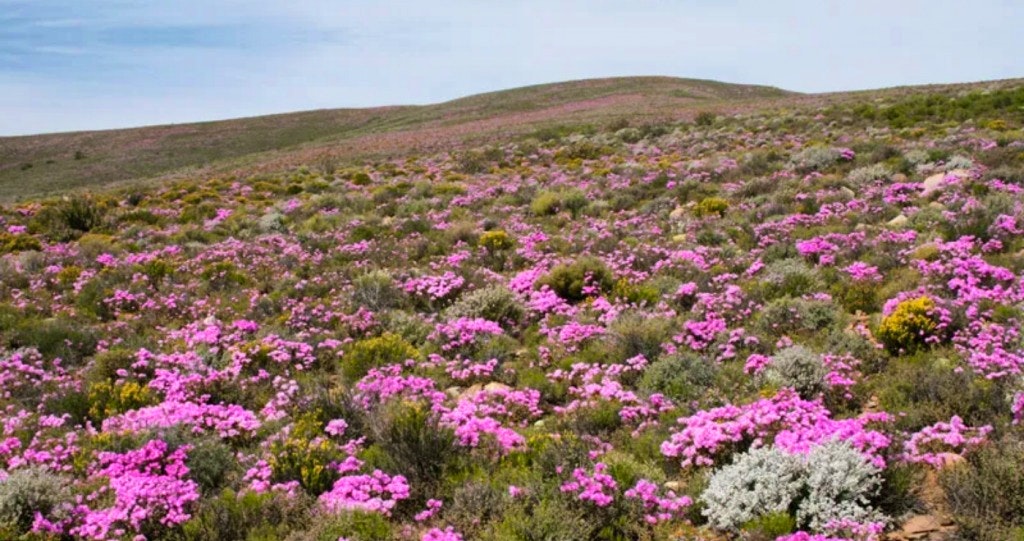
Best routes and reserves:
– Tankwa Karoo National Park (enter from Ceres, Calvinia, or Middelpos)
– 4×4 routes like Leeuberg and Watervlei
Drive the scenic R355 to Sutherland and grab a roosterkoek at the quirky Tankwa Padstal along the way.

Cederberg
Western Cape
The Cederberg Mountains are famous for their sandstone formations, rooibos farms, and beautiful, lesser-known wildflower valleys like Biedouw and Agter-Pakhuis.
Flowering Season:
August to September (dependent on weather)
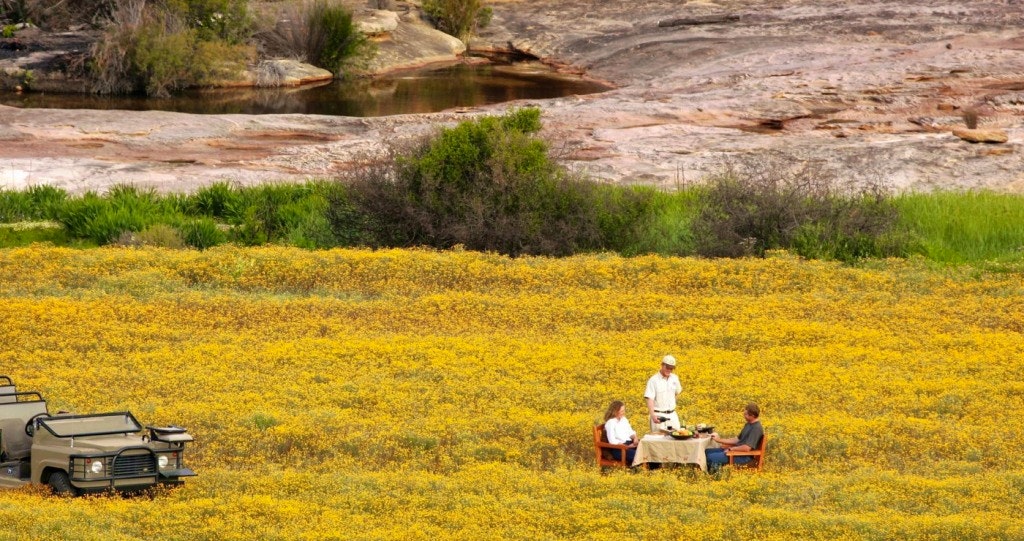
Don’t miss:
– Ramskop Nature Reserve and the flower church in Clanwilliam
– Sevilla Rock Art Trail and other hikes around Dwarsrivier and Kromrivier Farms
– Rooibos tastings, local food spots, and even a veldskoen factory
– Popular climbing spots for the more adventurous

Flower Viewing Tips
– Go early in the season and return later to catch different species
– Book accommodation early — flower regions fill up fast
– Chat to locals for the latest bloom updates
– Be weather-wise and flexible with your routes
– Pack smart: sunhat, sunscreen, antihistamines, picnic gear and walking shoes
– Tread lightly: don’t pick wild flowers or trample fragile veld
– Buy from nurseries: Support local growers instead of digging up wild plants
Notes to Remember
– In certain parks, you are not allowed to get out of the vehicle at all, except at rest stops. So it is better to inquire in advance about park activities.
– If you do not already have a flower handbook, get yourself a flower guide. Pamphlets are available for purchase at various tourism offices.
– Remember to take insect repellent, antihistamine, sunglasses, closed walking shoes, sunscreen, a sun hat and a picnic basket. Remember that you are sharing the veld with the sun and various insects that play an important role in the survival of the flowers. Also, be cautious of snakes.
– Please do not pick the flowers ─ take a photo instead! Some of the flowers are on the red data list, and nature’s seed bank definitely needs those seeds more than you need a pretty flower that will wilt before the day ends.
– Photographers, please don’t move rocks or branches to take a better photo. Rocks and bushes play a very important role in the survival of perennial plants by helping them survive the gruelling summer months.
– Respect the local residents and their boundaries. Never climb over fences or open gates that are closed. Instead, drive to the nearest homestead and ask if you can look around. Not everyone is necessarily looking for tourists on their private land.
– Many shops and nurseries in the flower regions sell seeds and plants of those that occur in the veld. Support them and buy a plant rather than taking one from nature. The same goes for pretty rocks.
– Whether you’re road-tripping through the Cederberg or picnicking in Namaqualand’s endless blooms, South Africa’s wildflower season is something magical. It’s wild, it’s short-lived, and it’s totally worth the road trip!
* * *
Feature image: Rietrylaagte Accommodation and 4×4
Read more:
5 Hiking Trails on the West Coast
Have You Visited These South African World Heritage Sites?




